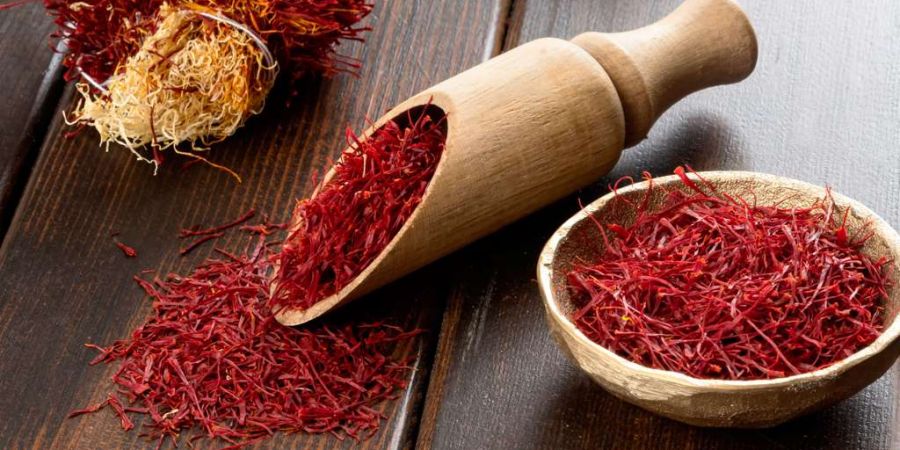

PREVIOUSLY:
Black pepper used to be the priciest spice in the world for many years. Black pepper's price decreased as production grew and it became a common ingredient in kitchens all around the world. Black pepper is one of the most cheap spices on the market right now.
COSTLIEST SPICE:
The delicate flavour and gorgeous golden tint that saffron imparts to traditional Indian, Middle Eastern, North African, and European dishes make it a highly appreciated ingredient. Yet what distinguishes it as by far the most costly spice in the world and supports the staggering price tag of between $1,000 and $5,000 per pound.
ORIGIN:

The "saffron crocus"—a flower with the scientific name Crocus sativus—is where the spice gets its name. Saffron is thought to have its origins in Iran and was brought to Europe by Arab invaders in the eighth century CE. It was solely grown in Spain at first, but over time it expanded to other countries on the continent. The top five producers of the spice now are Iran, Morocco, Greece, India, and Spain.
It's frequently used in paellas, risottos, rice dishes, Indian curries, and Persian stews. Several cheeses and liqueurs are flavourings that employ it as well.
WHERE IS SAFFRON USED FOR:
In culinary applications, saffron is used as a spice to flavor dishes or as natural yellow dye. Outside of food, saffron extracts are used to dye textiles or added to fragrances. Saffron is a common ingredient in Indian, Moroccan and Iranian cuisines. In India, it’s added to curries or used to infuse syrups for desserts such as Gulab Jamun or Malpua. In Morocco, it brings an earthy-sweet undercurrent to dishes such as Chicken Tagine with Olives and Apricots. In Iran, saffron is an essential ingredient in a crispy rice dish called tahdig. Saffron is also a key component in several European dishes, including Spanish paella, Italian risotto and French bouillabaisse.
HEALTH BENEFITS:
ANTIOXIDANTS BEING PROVIDED:
The majority of saffron's health benefits are attributed to its high concentrations of certain antioxidants. Crocin, picrocrocin, safranal,
Crocetin and kaempferol are the antioxidant substance present in saffron.
These antioxidants aid the body's defences against oxidative stress and free radicals. Antioxidants like these may assist safeguard a person's health because oxidative stress and free radicals contribute to the emergence of many diseases, including as cancer and heart disease.
PREVENTING NERVOUS SYSTEM DISORDER:
Crocin, one of the compounds in saffron, appears to lessen inflammation and oxidative damage in the brain, which may have positive effects.
Saffron's memory-enhancing qualities, together with its anti-inflammatory and antioxidant actions, aid with Alzheimer's symptoms.
MAY ENHANCE IMMUNITY:
Carotenoids found in abundance in saffron appear to affect immunity. According to a study done on healthy men, taking roughly 100 mg of saffron daily could provide short-term immunomodulatory effects without any negative side effects.
IMPROVE INSULIN SENITIVITY:
The hydroalcoholic saffron extract may help T2D patients with better blood glucose regulation by lowering their fasting blood sugar levels. On other facets of diabetes control in diabetics, it has no appreciable impact. The use of saffron may improve insulin sensitivity.
IMPROVE MOOD:
Your mood is improved by saffron, the "sunshine spice". Safranal, an antioxidant, is to blame. Saffron is a common ingredient in supplements because it is beneficial in treating mild to moderate depression. Furthermore, treatments based on supplements have no negative effects.
FADES SKIN PIGMENTATION:

In addition to vitamin C and other potent antioxidants that can lighten scars and discoloration, saffron also contains anti-inflammatory compounds. One of the best uses of saffron for skin lightening is this.
SIDE EFFECTS:
When used orally as a treatment for up to 6 weeks, saffron is POSSIBLY SAFE for the majority of people. Dry mouth, nervousness, tiredness, nausea, change in appetite, and headache are a few potential adverse effects. Some individuals may experience allergic responses.
Saffron in excessive doses taken orally is POSSIBLY DANGEROUS. Excessive doses can result in poisoning, which can have dangerous adverse effects include numbness, vomiting, disorientation, bloody diarrhoea, bleeding from the nose, lips, and eyelids, and a yellow appearance of the skin, eyes, and mucous membranes. Death may result from doses of 12 to 20 grammes.
